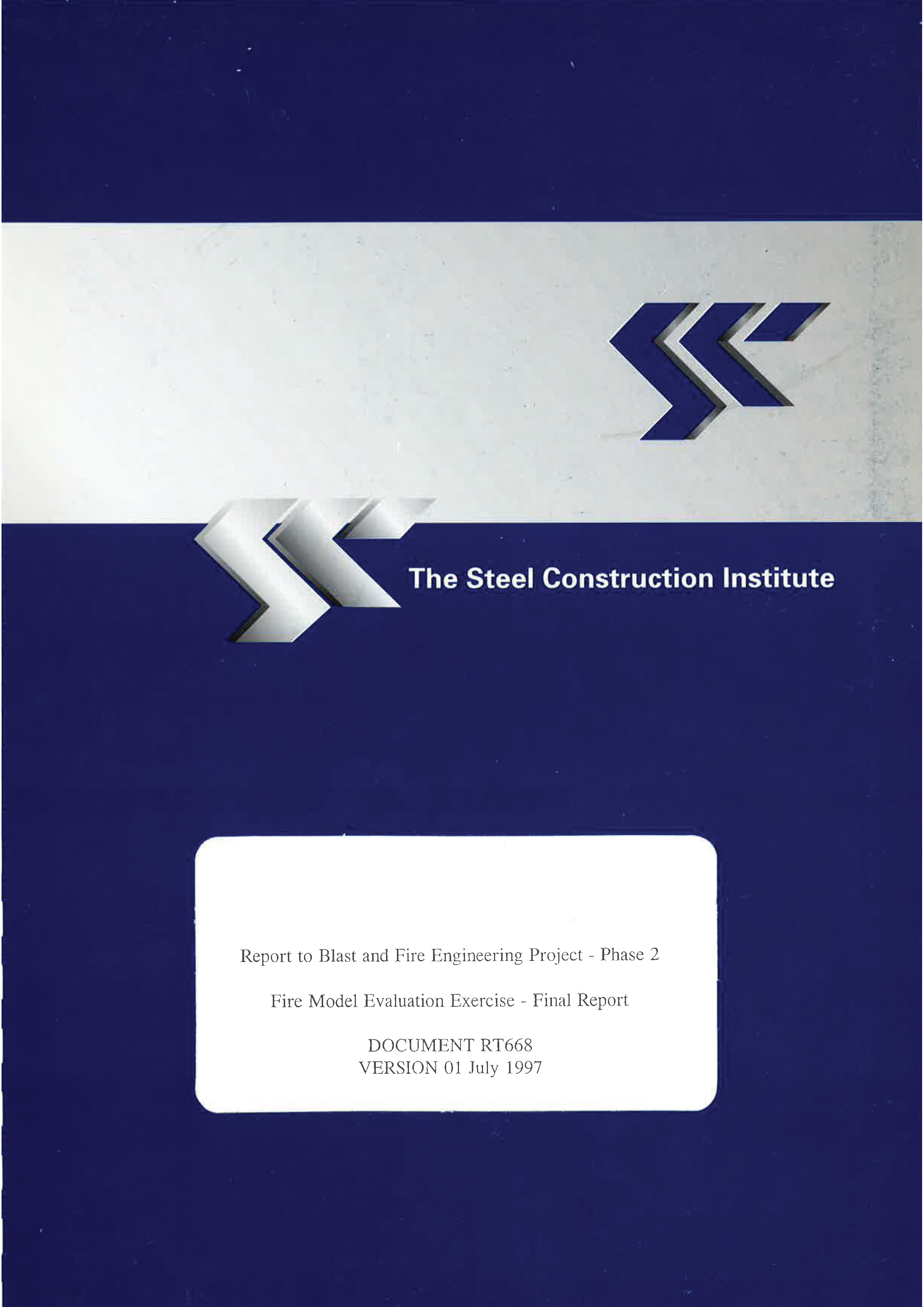SCI RT668
Fire Model Evaluation Exercise - Final Report
BFETS Phase 2

FABIG Members: Log-in to access all FABIG resources LOG IN
SUMMARY
In May 1990, the Steel Construction Institute (SCI) launched the industry sponsored ‘Blast and Fire Engineering Project for Topside Structures’. Phase 1 of this project identified that there were areas of major uncertainty in the design process, especially in determining the loadings that might be generated by a fire or explosion within a topside structure. Therefore, Phase 2 comprised a programme to study, using large-scale experiments, the behaviour of hydrocarbon fires and explosions and provide data for the development and validation of models for predicting loads generated by fires and explosions on offshore platforms. The main objective of the fire programme was to produce high quality data sets suitable for subsequent model evaluation. An initial evaluation exercise involving eight models from six organizations was undertaken as part of Phase 2.
Three fire tests were selected for the model evaluation exercise:
- An unconfined horizontal oil/gas jet fire;
- A vertical liquid condensate jet fire in 135 m3 enclosure;
- A vertical liquid condensate jet fire in a 415 m3
Model predictions were submitted before the tests were conducted. The level of detail in model predictions varied significantly between different models; the greatest detail was provided by the computational fluid dynamics (CFD) codes. The predictions from each model were compared with the experimental results for the following parameters for the unconfined jet fire:
- Thermal radiation;
- Surface emissive power;
- Flame geometry,
and the following parameters for the unconfined jet fire:
- Gas velocities;
- Gas and steel temperatures;
- Radiative and total heat fluxes.
In general, the predictions of most parameters were in the range of 0.5 ≤ Predicted over Observed ≤ 2.0. A more detailed comparison of individual parameters for each test is presented in the report. The model evaluation exercise has not attempted to rank models. It does, however, provide information on the performance models to assist users in selecting a model which is fit-for purpose.
The following limitations of the fire model evaluation exercise must be recognized:
- Only three experiments were used in the comparison and none of these experiments were repeated. Therefore the inherent variability in experimental measurements has not been addressed during this exercise;
- Small differences exist between the specified test conditions used by modellers and the actual test conditions (e.g. wind speed and direction).
Online purchase options:
Non-Members of FABIG are able to purchase PDF copies of the reports.